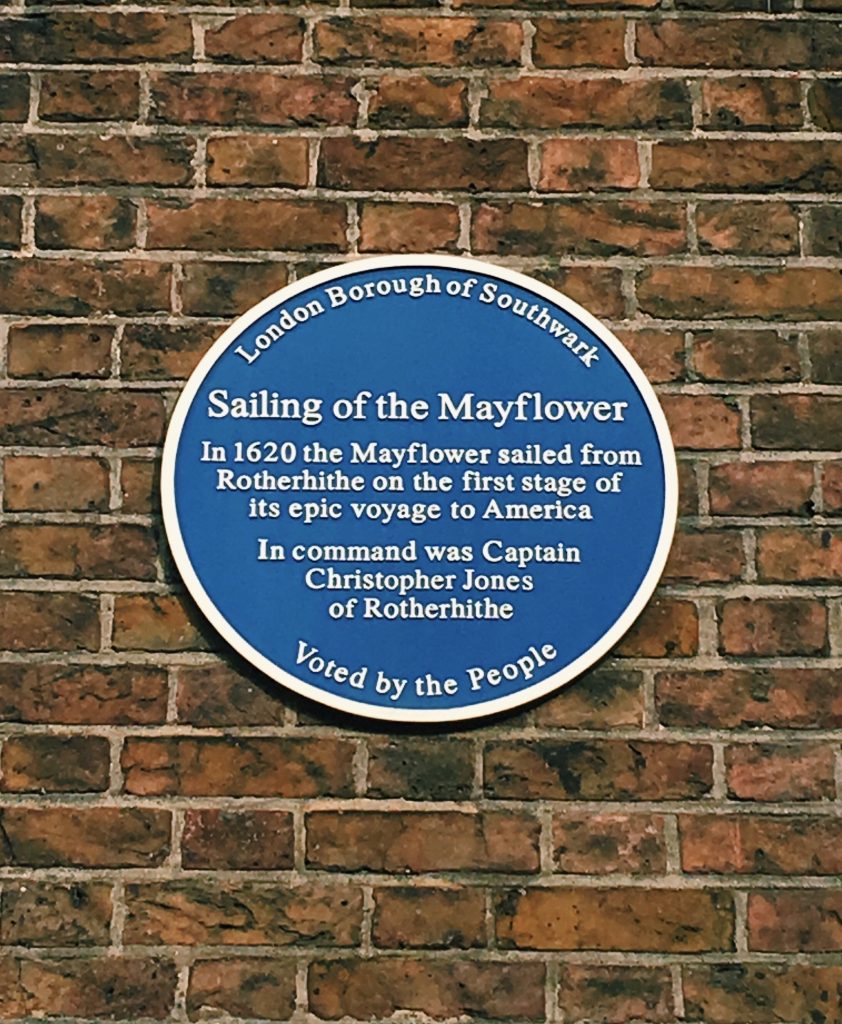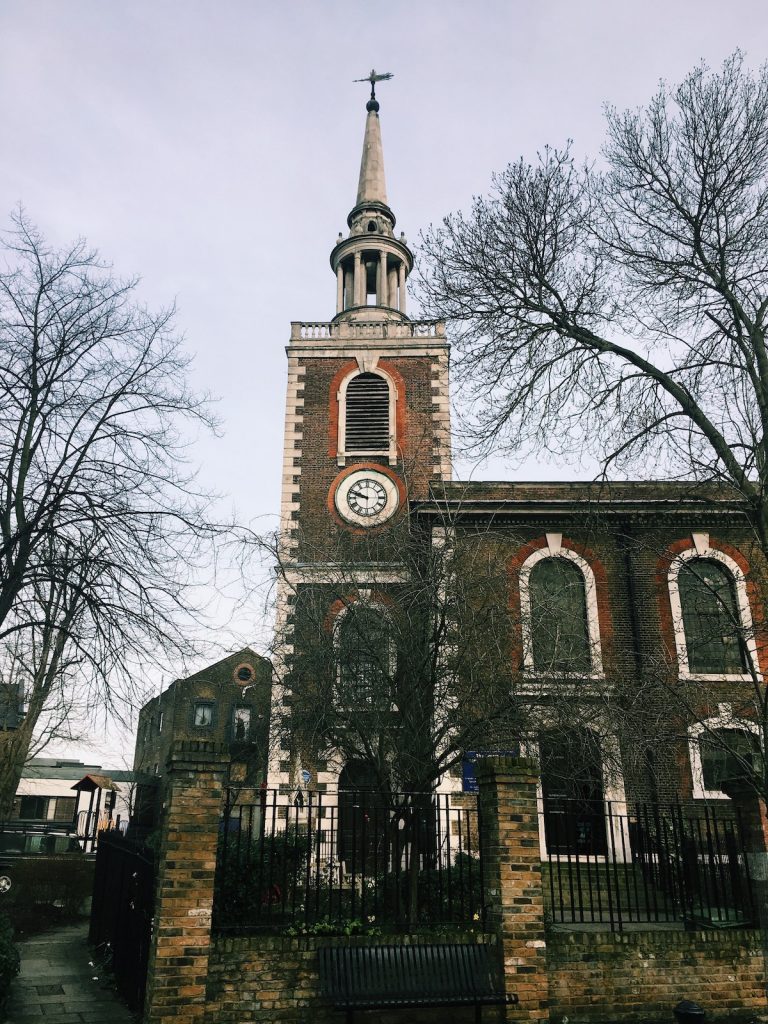So, as with every year, 2020 will be an anniversary for a number of important historical events. It is 100 years since the League of Nations held its inaugural meeting in London. The same year, 1920, saw the interment of the Unknown Warrior in Westminster Abbey and the unveiling of the Cenotaph monument in Whitehall. 100 years before that, 1820, was the year of Florence Nightingale’s birth; and 500 years ago, King Henry VIII’s celebrated meeting with the King of France near Calais at the Field of Cloth of Gold. Finally, it would be remiss not to mention one last famous anniversary, not a centenary but 850 years, since the martyrdom of Archbishop Thomas Becket in Canterbury Cathedral in 1170.
All of these are of historical significance, perhaps more so to us Brits than to most visitors to the UK, but there is one other event that is of equal if not greater significance to our cousins … yes, literally our cousins, from the United States. No prizes for guessing, but it’s the 400thanniversary of the voyage of the Mayflower, sailing from Plymouth, England to Plymouth, Massachusetts in September 1620.
There is probably no event more important in the history of the Protestant Separatist movement, and this year it will be commemorated in style, in various key locations on both sides of the Atlantic. Communities in Massachusetts, USA; in England; and in the Netherlands, have partnered together and will be laying on a exciting programme of cultural events, including theatre, dance and music performances, many with maritime, Christian Reformation and New World themes. There will be seafood and beer festivals, Mayflower Tours, sports events and commissions of public art and exhibitions, all under the banner of the ‘Mayflower 400’ project.

So, what precisely will we be commemorating … or as some would say, celebrating ? It’s a great story, if a somewhat complex one, so forgive me for not immersing ourselves here in too much of the historical detail but in broad outline, one might summarise the events of a that one hundred year period 1530-1630, as follows …
- Following a dispute over his wish to divorce from his first wife, Katherine of Aragon, King Henry VIII separates England from Papal authority in Rome.
- The English Protestant Reformation gets underway from the 1530’s onwards. Catholic worship is made illegal.
- Many conflicting views emerge as to what the new Protestant Church of England should look like, in particular: the ecclesiastical hierarchy; who should hold power and authority; and aspects of doctrinal theory, ie. interpretations of the Bible.
- ‘Puritans’ emerging in the late 1500’s, wanted to purify the church (…hence their name) of Catholic rituals that had survived Henry VIII’s earlier reforms. These included: practising 5 of the 7 sacraments – Eucharist, Penance (or Reconciliation), Anointing the sick; Holy Orders and Matrimony. They supported continuation the other two, Baptism and Confirmation. They also wanted to abolish: veneration of the Saints including pilgrimages; Priests wearing highly decorated items of clothing and the use of ornate accessories, the ‘vestments’ as they were referred to; and forcing people to worship in churches, often intimidating and overwhelming in scale. The Puritans wanted to achieve these changes from with the existing church, but many others disagreed. A ‘church within a church’ evolves.
- ‘Separatists’ wanted even more radical change than the Puritans, believing it was not possible to reform the church from within. They advocated complete abandonment and separation and for this, they are persecuted almost as mercilessly as the Catholics. Their exile from England becomes inevitable.
- Many Separatists come from the area bordering 3 counties – around North Nottinghamshire, South Yorkshire and West Lincolnshire. Men such as William Brewster, William Bradford, John Robinson and John Smyth become the Movement’s leaders.
- The Netherlands is renowned for its liberal practices, its tolerance of alternative forms of worship, and hospitality towards those seeking refuge from persecution. For these reasons, it becomes a popular destination for the Separatists fleeing from England.
- After a failed first attempt, a group succeed in escaping via Immingham Creek on the North Sea coast in 1608. They settle in Leiden, Holland, establish their new lives there and remain for the next 12 years.
- 40 or so, settle permanently, but about the same number decide that Holland was only ever an interim step in their quest for full `Religious and Economic freedom. For them, the New World beckoned.
- A ship called the Speedwell set sail from Holland in July 1620 with a plan to meet up with a second vessel, the Mayflower in Southampton and from there, the 2 ships would set off together on their voyage across the Atlantic.
- The Mayflower had begun its journey at Rotherhythe on the River Thames in central London, with its Captain Christopher Jones.
- Almost immediately after leaving Southampton, the Speedwell started to leak water and had to seek refuge in Dartmouth for urgent repairs. After this false start, both ships set off again but alas, the Speedwell’s second departure failed also. The ship was simply not sufficiently seaworthy to attempt the Atlantic crossing and it was forced to return to Plymouth where it finally abandoned its mission. More than 2 months later than planned, the Mayflower departs Plymouth alone on 16thSeptember 1620, with its mixed group of 102 passengers, the ‘Saints’ (Separatists) and the ‘Strangers’ (mostly Tradesmen), plus the 30 or so, ship’s crew. It was to be an ordeal more challenging than they could ever have imagined.
- The crossing in treacherous autumn storms, took 66 days during which time, almost the entire group were constantly sea-sick, one person was swept overboard, and miraculously, a healthy baby was born. They eventually reached sight of land and anchored in what is today Provincetown harbour.
- The Colonists had originally intended, and had been given permission, to land further south in Virginia, which had been first established some 15-20 years earlier, but because of the dangerous weather conditions, they now decided to remain in the Cape Cod area. They realised however that they had no legal right to do so and therefore drew up a document known as the ‘Mayflower Compact’ in the hope it might offer them some legal standing. With the extreme adversity they were facing, it was also an Agreement to cooperate for the general good of the new colony. 41 men of the group signed the Compact including William Brewster and William Bradford.
- The colonists very soon realised that they were not the first humans to have settled here. There was clear evidence of human habitation – buried corn, graves and remains of abandoned dwellings. The Wampanoag people had been living here for many thousands of years, but with their continued survival under threat from the violence of competing native Indian tribes, and more seriously from diseases brought by earlier European settlers, they befriended the Mayflower Pilgrims (…as they later became known), and helped them become established.
- Cooperation with the Wampanoag did develop, but only after an initial period of terrible suffering. Many could not even leave the boat moored up in harbour during the first harsh winter and by the spring of 1621, half of the Mayflower’s company had perished of cold, starvation or disease.
- Eventually, 53 survivors did manage to establish their small Settlement, which they named Plymouth. They constructed houses and communal buildings; planted corn and with help from the Wampanoag, learnt new fishing and hunting skills. By the following autumn, a bumper harvest was being celebrated, and this they did with an invitation to their new friends to join them in a feast that was to become known as the first Thanksgiving. It has been celebrated since throughout the United States, every year on the 4thThursday of November.

The Mayflower adventure was not particularly unique - many other pilgrim expeditions ventured to the New World both before and after 1620. Numerous other settlements were established up and down the east coast of America with similar stories of struggle, heroism, success and failure, some based on fact, others on a bit more fable. Sadly, there is nothing uncertain about some of the uglier aspects of the colonisation of America, in which the Mayflower played its part, albeit a very small part. In the years that followed that now-famous ship’s arrival, relations with the Wampanoag and other indigenous tribes unfortunately deteriorated, culminating in the ‘King Phillip’s war’ of 1675, in which the native Indians were brutally defeated by overwhelming numbers and modern weapons technology. From this point on, the unstoppable tide of European immigration accelerated, and in so doing, brought about a near-complete demise of the American Indian civilisation, a bitter legacy that lingers still to this day.
Historical accuracy and contemporary politics aside, the story of the Mayflower Pilgrims nevertheless remains the stuff of legend. For those of us with a taste for history and nostalgia, it is engrained into our psyches, both epitomising the best of the American spirit, and reinforcing something of the ‘special relationship’ that has endured between England and the United States for the four centuries since that little ship set sail from Plymouth … ‘our’ Plymouth that is.
Aside from Mayflower 400’s wider Programme of cultural events planned to take place in the coming year, we at British Tours have also made our own preparations. We will be offering a range of structured, but at the same time flexible itineraries for tours to some of the important locations, associated with the story of the Separatists, (not just the Mayflower) both in and outside of London. Working in conjunction with local Partners, we will be offering bespoke ‘day’ or ‘overnight’ tours to small client groups, led by a British Tours Ltd Tour Guide in a private vehicle or by public transport.
Dressing up is optional, (…though we have the hats) … learning, sharing and having fun, is not. See our Mayflower Anniversary Tours for more information
Post by Paul, British Tours Tour Guide
